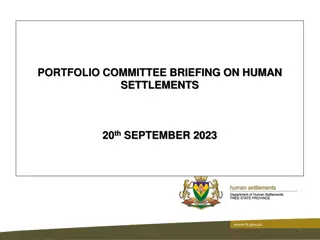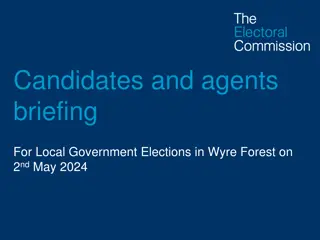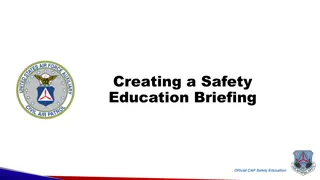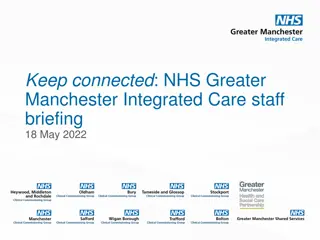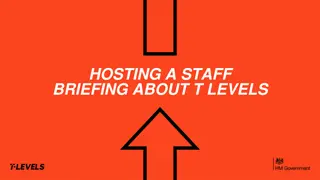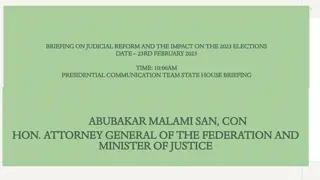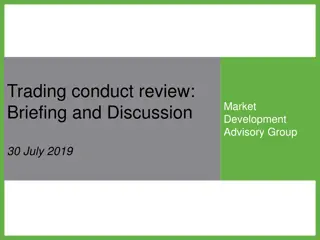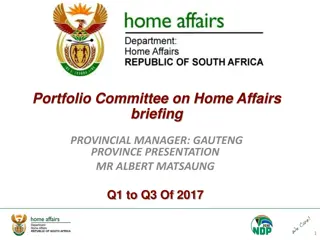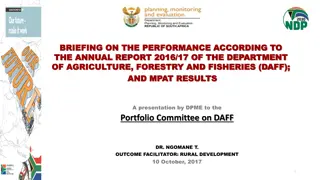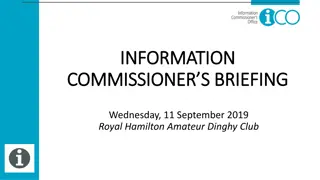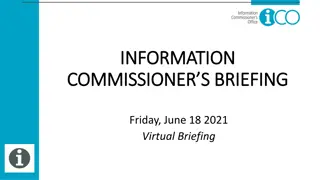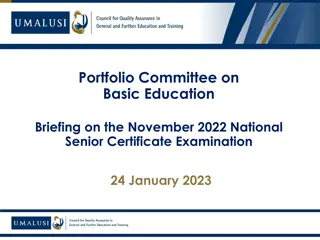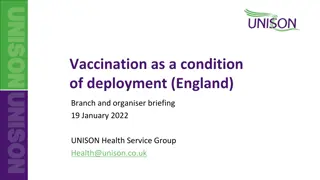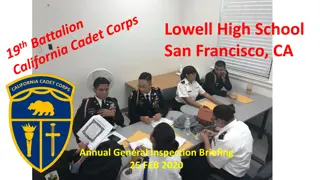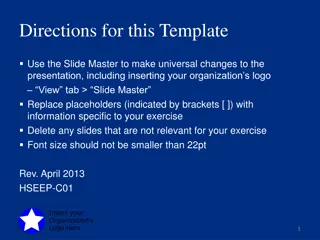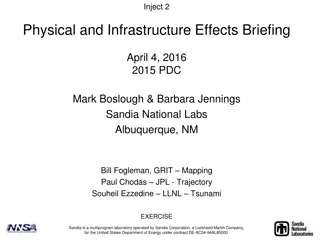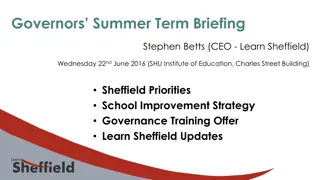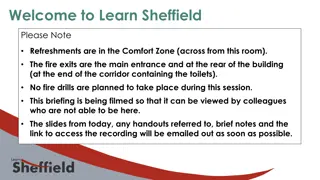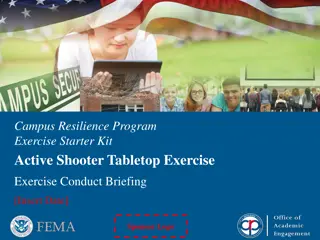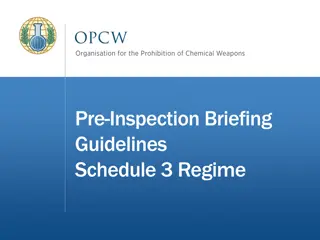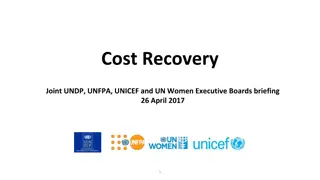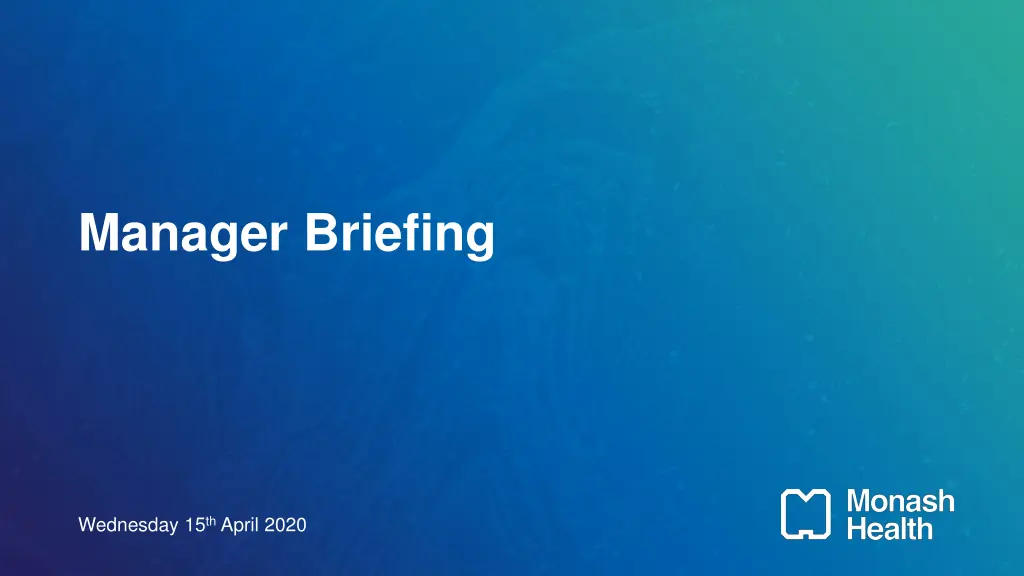
COVID-19 Employee Accommodations and Work Arrangements
Learn about employee accommodations and remote work options during the COVID-19 pandemic. Details include eligibility criteria for emergency accommodation, guidelines for working from home, and examples of suitable and unsuitable roles. Find out how to protect employees and reduce the spread of the virus effectively.
Download Presentation

Please find below an Image/Link to download the presentation.
The content on the website is provided AS IS for your information and personal use only. It may not be sold, licensed, or shared on other websites without obtaining consent from the author. If you encounter any issues during the download, it is possible that the publisher has removed the file from their server.
You are allowed to download the files provided on this website for personal or commercial use, subject to the condition that they are used lawfully. All files are the property of their respective owners.
The content on the website is provided AS IS for your information and personal use only. It may not be sold, licensed, or shared on other websites without obtaining consent from the author.
E N D
Presentation Transcript
Manager Briefing Wednesday 15thApril 2020
Manager Briefing Agenda Accommodation Working from Home Schools Term 2 At Risk Employees Reassignment/Mobilisation Questions 6/07/2025 2
Eligible employees Monash Health employees may be eligible for free emergency accommodation To be eligible, employees must: 1. Be required to self-quarantine or self-isolate because of COVID-19 (i.e. tested COVID19 positive or was exposed without wearing appropriate PPE) AND 2. Does not have a suitable home environment to quarantine (i.e. lives with member of an at risk population, lives in a share house that is unsuitable for quarantine/self isolation, lives with another front line worker.)
Ineligible employees Ineligible employees Employees who were wearing PPE while coming into contact with a confirmed case of COVID1 Lives with a someone who has been in close contact with another person who has COVID- 19 or suspected of having COVID-19 Community Health Practitioners Examples of ineligible employees The employee was exposed to COVID-19 and was not wearing PPE. This employee lives with children under the age of 15 The employee was tested positive and lives alone but would prefer to self-quarantine or self- isolate in a hotel room.
Details about the scheme Three meals a day Mini-bar and in house movies are at not included Internet included Employees are to stay in their room, gyms and other facilities are closed During self-isolation employees are not to attend work to reduce the risk of spreading the virus No visitors or no outings. 6/07/2025 6
Who can work from home? Where it is practical and operationally viable to perform a role partly or fully from home or remotely, managers should consider work from home arrangements for employees. Challenge yourselves to rethink the way work can be done. Suitable roles Corporate services areas (Finance, IT, P&C, etc.) Quality, Education Patient consultations when no examination is necessary Clinical or non-clinical activities that can be performed by phone, email or Webex Unsuitable roles Roles that have direct patient and customer service 6/07/2025 8
How to get set up to work from home? Contact IT Connect to arrange for Citrix and Web access to access email, Kronos, Intranet and other applications you and your team might need. Utilise the checklist about the workstation, computer setup and work environment to help create a safe work environment from home. View the guides on the Covid website for how to manage Kronos from home. Do people need a Monash Health laptop? No. Remote access can be via your personal laptop, computer, tablet or mobile device. 6/07/2025 9
Managing your team working remotely Employees working from home may feel cut off from the resources, information or relationships they need to do their jobs well Plan to communicate frequently. Be clear on expectations and performance measures. Stay focused on goals and outcomes, not activity or hours worked. Set up daily, weekly check-in conversations. General Check-in Questions how is everything going?, what are you priorities this week? Progress Questions what has challenged you?, what has gone well/not so well? Relationship Questions how is it going with people you work with?, what feedback do you have for me? 6/07/2025 10
Process 1. Have a conversation with your team member about working from home and agree to a plan 2. Complete the coronavirus working safely from home agreement and checklist 3. Sign the agreement/checklist with your manager 4. Send your signed agreement/checklist to: professionaldevelopment@monashhealth.org Working from Home guides on Covid site: Employee-Working from Home 6/07/2025 11
Schools Flexible and Remote Learning Term 2 will be flexible and remote learning meaning that all children who can learn at home must learn from home. Schools will still be open for children of healthcare workers who cannot work from home. They are able to send their children to school. If an employee is unable to work their full shift because a before/after school care program is closed, they may take accrued annual leave or long service leave or they may wish to apply for a flexible working arrangement. Carer s leave is available on a case-by- case basis in accordance with their Enterprise Agreement. If they choose not to send their child to school and can t work from home, they will need to take annual leave or long service leave. Special leave is available only in limited circumstances. Special leave does not apply where: The child or children have access to on-site learning at their school but the employee chose not to send them. Another member of their household is present to care for your child or children. They elect to use accrued personal/carer s leave. It is school holidays. 6/07/2025 13
Process for managing employees who may be at risk of serious illness from COVID-19 At-risk employees are defined by the Department of Health and Human Services and include: Aboriginal and Torres Strait Islander people over 50 years and older with one or more chronic medical conditions Employees 65 years and older with chronic medical conditions Employees 70 years and older Employees with compromised immune systems Employees who are pregnant 6/07/2025 15
What are the identified chronic conditions that place an employee at-risk? The following chronic conditions are of concern in Aboriginal and Torres Strait Islander employees over 50 years and healthcare workers over 65 years: Chronic renal failure Coronary heart disease or congestive cardiac failure Chronic lung disease Poorly controlled diabetes Poorly controlled hypertension 6/07/2025 16
How is immunocompromised defined? Employees at any age with significant immunocompression include those who: Have haematologic neoplasms Are post-transplant Are immunocompromised due to primary or acquired immunodeficiency Are on current chemotherapy or radiotherapy Are on high-dose corticosteroids Are on all biologics and most disease-modifying anti-rheumatic drugs 6/07/2025 17
What should pregnant employees do? Before 28 weeks gestation: Avoid areas where there are suspected or confirmed cases of COVID-19. Avoid higher-risk clinical areas such as theatre, respiratory wards, intensive care and high dependency units or any other areas where aerosol generating procedures are performed. After 28 weeks gestation: Should not be in roles with direct patient contact and In all situations, avoid contact with suspected or confirmed cases of COVID-19. If concerned about continuing to work in their current roles - complete the screening checklist and follow the process. If unable to WFH or be reassigned to a safe workplace - entitled to paid leave no safe workplace until a suitable reassignment opportunity is found. 6/07/2025 18
What should potentially at risk employees do? Complete the screening checklist Managers must not complete screening checklists on behalf of employees. You may support your employee in completing the checklist, if the employee requests for your assistance. Email the completed checklist to COVID19employeeenquiries@monashhealth.org. Support the checklist with evidence (medical certificate or statutory declaration) where required. All employees who are at-risk will be required to follow this process, irrespective of any existing leave or work arrangements. 6/07/2025 19
What happens after an employee completes the screening checklist? Completed checklists will be reviewed and it will be assessed if the employee is: At risk of serious illness from COVID-19 and If the area they are working in places them at low/high risk of contracting COVID-19. Initial review will be conducted by a nursing panel. If nursing panel requires additional advice, they will forward the checklist for assessment by the Clinical Panel. If additional information is required during the assessment, the nursing/clinical panel will contact the employee and/or their treating physician. 6/07/2025 20
What happens after an employee completes the screening checklist? (Contd.) Assessment Outcome Employee is not at risk Communication Employee informed through email Email to manager and business partner, copying the employee Required Changes No changes required to current work arrangements No changes may be required to current work arrangements. Make sure they are aware of infection control and PPE guidelines. Manager and business partner to identify best and safest available option in discussion with the employee Employee is at risk + working in a low risk area Employee is at risk + working in a high risk area Email to manager and business partner, copying the employee 6/07/2025 21
What should the employee do while the checklist is being assessed? Aim to complete assessments within 24 - 48 hours. Ideally, employees should remain in their roles while this is completed. However, if employees have immediate concerns, address them accordingly. Consider WFH, moving the employee to a safe environment to perform their work or advise. As a last option- employees may take annual leave or long service leave. 6/07/2025 22
What are the options available to protect employees identified to be at risk and who are currently working in areas that are considered to be high risk? The manager and business partner must explore the following options: Is the employee able to perform their role from home? Is the employee able to perform the same or related work in a safe environment? Is the employee able to be reassigned to another role? If an employee cannot WFH or be reassigned to a safe workplace, they will be entitled to paid leave no safe workplace'. 6/07/2025 23
What are the next steps if reassignment is recommended? Manager and business partner will consult with the employee to discuss experience and skills and identify areas the employee may be suitable to work in. Manager must complete the Workforce Reassignment Notification (SharePoint survey). Manager requests employee to complete the Workforce Mobilisation Profile. Workforce Mobilisation Team will contact you and the employee to try and reassign the employee to a suitable area. 6/07/2025 24
I am concerned about my direct report who may be at risk of serious illness from COVID-19, what should I do? You should discuss your concerns individually with each employee. If your employees falls into the at-risk categories and is: Nature of role and level of concern Advise to employee Working in a patient facing role Complete the screening checklist Working in a non-patient facing role + concerned about continuing to work in current role/work area Complete the screening checklist Non-patient facing role + comfortable continuing to work in current role/work area Ensure they are aware of infection control and PPE guidelines relevant to their work role/area 6/07/2025 25
Information relating to the process At-risk Employees page on COVID-19 website: Screening checklist FAQs Process flow Employees may email COVID19employeeenquiries@monashhealth.org for support with completing the checklist. Information relating to reassignment available via COVID-19 website. 6/07/2025 26
Workforce Reassignment/Mobilisation
What does reassignment mean? Temporarily places an employee into a role within a different unit/function. All aspects of the employee s work will be managed by the placement manager, until such time as the employee s primary service is reinstated. This includes leave, Kronos administration etc. Occurs when employees are unable to perform their normal role because: the service or unit is temporarily closed or reducing services, or the employee has completed the At Risk Employee Process and requires assistance to be temporarily reassigned 6/07/2025 28
How will the team assist? Support managers to discuss reassignment with their team Liaise with employees regarding temporary reassignment opportunities Liaise with relevant discipline experts for training and local on-boarding requirements 6/07/2025 29
Key Questions regarding reassignment Is being reassigned to another area optional? If employees do not wish to be reassigned they should discuss this with their Manager and explore what other arrangements can be made, which may include taking leave. Will the hours of work match my current hours? Wherever possible your hours will be matched. If there is a reduction in your hours, salary maintenance will be applied. If you elect to work reduced hours only these hours will be paid. Will I continue to get paid, even if I am not working? If you cannot be reassigned, you will continue to be paid your current salary. However, if you can be reassigned and you refuse the reassignment, you will need to discuss taking paid and/or unpaid leave with your manager. 6/07/2025 30
What if I have a request for resources? The mobilisation team can assist where: There is a requirement for new or additional resources (where internal options have been exhausted) There are projects which could benefit from reassigning people How will the team assist? Act as a single contact for managers needing roles filled Liaise to fill roles in the order: 1. Reassignment 2. Bureau 3. New Hires (if required) Work with on-boarding team to fast-track commencement 6/07/2025 31
Employee Mobilisation Profile Who is it for? All employees (excluding JMS and SMS) What is it for? To help identify additional skills, qualifications and specialties of existing Monash Health employees that could be utilised in other areas of the health service. This may result in existing employees working in one of the following areas in a clinical environment backfilling other colleagues working in specialist areas, or in our support service functions. 6/07/2025 32
Visit coronavirus.monashhealth.org/employees Further Information and FAQs To apply for accommodation COVID19accommodation@monashhealth.org At Risk Employees COVID19employeeenquiries@monashhealth.org Reassignment COVID_workforcemobilisationteam@monashhealth .org 6/07/2025 33

